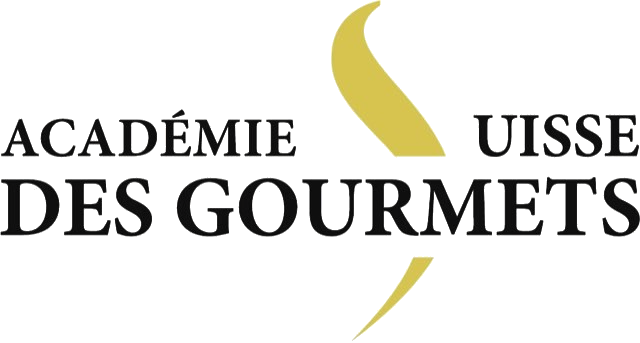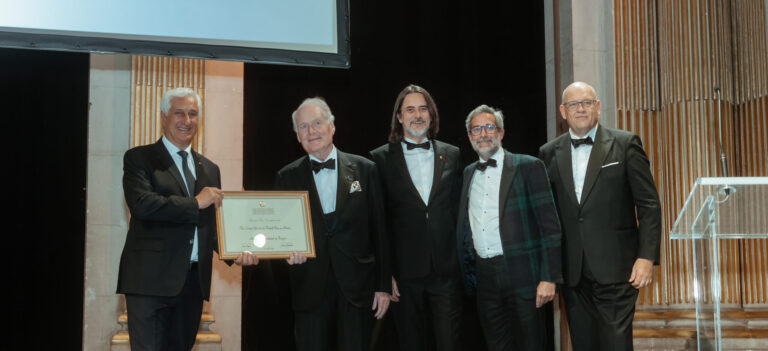Switzerland

Académie suisse des gourmets
The act of eating connects people; mother and child, family members, friends, business relationships… It ties together a social fabric far more important than imagined. Since the cascading food crises, we have become increasingly aware of this. But eating also creates connections across space and time. Across space, food circulates from one region to another. Between regions, countries establish economic ties (which can, in this case, be unbalanced). This is why certain food choices remain political choices. Whether it is fair trade or simply the relationships of trust that are established with local merchants, food also forges links with the past and agricultural techniques, preservation methods, cooking recipes are all knowledge that we inherit from the generations that precede us and that we will, in turn, pass on to future generations.
Swiss cuisine, like the country itself, is diverse in terms of its geography and languages. Typically rural, robust, and making good use of seasonal ingredients, Swiss gastronomy is best known abroad for its traditional cheese dishes such as fondue and raclette. Food lovers will think of chocolate, traditionally made from milk, of which the Swiss are the world’s largest consumers! But the culinary heritage of the land of William Tell is far richer and more varied than one might think. At a time when food is in crisis, when the cost of eating is widening an incomparable and hitherto manageable social divide, and when public health is trying to cope with the rise of disease, let’s discover a culinary heritage that is far more pronounced and engaged than the neutrality of a sometimes discreet policy.
The history of food is just as historical, sociological, and psychological. It bears witness to the constant evolution of man throughout the ages. When anthropologist Claude Lévi-Strauss says that “raw is natural, cooked is cultural,” he adds that “it is by cooking his piece of game in front of the fire that the primitive being, ceasing to be a ferocious beast, became a man.” We could already echo Neil Armstrong’s words during his passage on the moon: “one small step for man, one giant leap for mankind.”
Before really focusing on Switzerland, agronomist Louis Malassis, a specialist in agri-food economics, distinguishes three ages of human nutrition. First, the pre-agricultural period, which represents three million years from Australopithecus. This is followed by the long period known as the agricultural period, which began in the Middle East around 10,000 years ago, with the Neolithic (r)evolution, which slowly spread to Europe 2,000 years later. Finally, the agri-food period, born of the Industrial Revolution 150 years ago, which radically changed the diet in connection with technological progress.
On the history side…
Mesolithic
The Mesolithic period was a transitional period characterized by global warming due to melting glaciers. Cold steppes disappeared and were replaced by deciduous forests, lakes, and rivers. This change allowed flora and fauna to thrive and provided humans, who had mastered fire, with new food and culinary resources.
10,000 years ago, the inhabitants of what is now Switzerland lived as nomadic tribes and settled in camps of huts or tents made of skins fixed to stakes in rock shelters. They followed wild herds and moved with the seasons, when the food and game were exhausted.
Nature provided them with the necessary materials: stones, wood, horns, bones, and hides, which they skillfully shaped to suit their needs. Thanks to the invention of the bow, humans could hunt game and fish with woven traps and bone harpoons. Food became more diverse, and our ancestors had a range of edible foodstuffs at their disposal, which they could combine and heat according to available resources.
While the men hunt, the women take care of the children, gather, and prepare meals. At camp, clan members gather and share meals around the protective fire, grill food seasoned with fragrant herbs, roast game on a spit, and simmer a rudimentary soup. Long before the invention of the earthenware pot, Mesolithic humans protected a stuffing made from mixed ingredients with plant leaves, wrapped them, and then cooked on a heated slab. A dish cooked in “little parcels,” arguably one of humanity’s earliest culinary preparations.
Neolithic and Metal Age
Imported from the Near East, the development of agriculture is a major development in human history. Agriculture became widespread in Western Europe around 6,000 years ago. Humans gradually abandoned their nomadic lifestyle for a sedentary one; they domesticated and raised goats and sheep, and cultivated cereals. From then on, humans appropriated and dominated nature.
These first farmers lived communally in villages established on the shores of lakes to avoid flooding. The houses, built on stilts, were made of mud, wood, and stone with thatched roofs. The men cleared the forests and created clearings to create pastures and grain fields. They had reserves of flour or dried peas that they preserved and processed. This improvement in living conditions led to an increase in populations; it also marked the emergence of property, which needed to be protected.
The invention of ceramic pottery revolutionized the diet thanks to the cooking of porridge and stews in airtight containers. Ground cereals were used to make flour for making pancakes baked in an earthen oven. A new food, milk, was transformed into fresh cheese or yogurt for preservation. The diet continued to improve thanks to the combination of protein-rich cereals and legumes. Wheat, milk, meat, and vegetables were combined with wild ingredients harvested from nature. Barley porridge with nettle shoots and rosehip purée or a leg of kid marinated with hazelnuts and honey were on the menu at a waterside camp.
Gallo-Roman period
In the 1st century AD, present-day French-speaking Switzerland was populated by Gallo-Romans; they were Helvetians of Celtic origin settled by Julius Caesar, who gradually mixed with the Roman occupiers and formed the Helvetians nation whose capital was Aventicum (Avenches).
Gallo-Roman cuisine is of Mediterranean origin; little by little, sweet and salty and sweet and sour flavors from the Orient became much appreciated. New exotic products, dates, figs, cinnamon, pepper, and ginger were imported from all over the Roman Empire. The inhabitants mixed aromatics and herbs (lovage, rue, savory) and prepared broccoli with mint or cucumber flan. Olive oil also changed the tastes and cooking methods.
The common people’s meals consisted mainly of cereal porridge, pancakes and breads, lentils, fruits and vegetables, mushrooms, eggs and cheese, but rarely meat. Slaves were content with polenta, a barley and flax porridge with vegetables. The wealthy population lived in the first residences of the agricultural estates. The day was punctuated by three meals, beginning with the jentaculum , a breakfast of bread, honey, water and dried fruit. The prandium was a quick snack eaten on the go around midday. The evening meal, the cena , consisted of three courses: the gustatio , hard-boiled eggs and olives to whet the appetite, followed by the main course, the prima mensa , consisting of boiled meats in sauce. Finally, the secunda mensa offered dishes of fruit, cakes and sweets.
Medieval period
Around the year 500, the Burgundians, a people from the north, integrated with the Gallo-Romans and adopted their way of life. Medieval society was highly hierarchical and divided into three orders: the clergy who prayed, the lords and knights who fought, and those who worked: the artisans and merchants of the towns and the peasants. The latter represented 90% of the population.
Medieval cuisine is based on three symbolic elements: bread, wine, and accompaniments. The daily menu included soup, usually a vegetable broth poured over a slice of stale bread, oatmeal, and stews of vegetables, peas, and bacon. Peasants lived in close proximity to their animals in hovels grouped into villages controlled by lords. Wheat was ground at the mill and bread was baked in the “communal oven” for a lordly fee. In towns, food trades were divided into guilds; pastry chefs offered the first bricelets, rissoles, and lark pâtés in their shops.
Medieval feasts were staged displays of wealth and power. In castles, the table was “set”: planks were placed on trestles and covered with embroidered tablecloths. Everyone picked at the dishes with their fingers, wiped their hands and mouths on the tablecloth, and shared a slice of bread and a common goblet of watered-down wine with their neighbor.
The Renaissance
Coming from Italy, the Renaissance represents a transition in many areas, such as the arts (Leonardo da Vinci), technical progress (invention of the printing press by Gutenberg in 1450), the Protestant Reformation or marks the discovery of America by Christopher Columbus in 1492.
Low agricultural yields, the growth of cities, and population growth created agrarian changes that led to land clearing and the transformation of pastures into cereal fields. This development led to a decline in meat production and an increase in bread production. This era primarily changed the presentation of food without changing tastes. Table manners also evolved: the plate replaced the cutting board, the napkin and glass became individual, and the fork gradually appeared. The humanist Erasmus (who died in Basel in 1536) introduced the notion of civility, and manuals on good manners and social etiquette were published.
At aristocratic tables, meat consumption declined. However, many offal recipes—brains, ears, teats, and cockscombs—were appreciated. New vegetables—asparagus, cucumbers, artichokes, and cauliflower—were introduced, while previously despised roots like carrots, turnips, and parsnips became fashionable.
The Old Regime
In the 17th and 18th centuries, the cuisine and eating habits of the people hardly changed. Like that of Europe, Waldensian society was divided into unequal social classes, and the majority of inhabitants lived off agriculture. Transport by horse and boat was slow and expensive; products traveled little, and food resources remained regional.
Thanks to the French agronomist Antoine Parmentier, potato consumption replaced bread. In the canton of Vaud, this marked the birth of the famous “papet vaudois.” The full-fat cheese, eggs, and cream were sold to bourgeois families for gratins and pastries; Gruyère was exported to France and Italy.
The peasants’ produce was sold in markets that supplied the urban population. Grocery stores sold everyday products, and fairs allowed peasants to sell livestock to buy essentials. In terms of cooking, the development of juices and coulis, béchamel sauce, flour and butter liaisons (roux), reduction, and deglazing allowed for the development of gastronomy and cookery manuals. In 1798, thanks to school literacy, the first French-speaking cookbook, La Cuisinière genevoise , was published to preserve local traditions.
The Industrial Revolution
At the end of the 18th century, the French Revolution abolished the privileges of the nobility and declared the Charter of the Rights of Man and of the Citizen. In the 19th century, the Industrial Revolution represented a social and economic upheaval with the development of mechanization and transportation.
The rural exodus pushed many peasants to settle in the city as factory workers. Deprived of gardens, they had to buy their food. In the Swiss cantons, home economics classes were organized for young girls, to teach them how to cook and promote hygiene and health in urban homes. This was the time of the birth of canned food factories, but these remained expensive for the time being and did not achieve popular success. As early as 1885, Bouillon KUB and Maggi freeze-dried soup tablets appeared. Unrelated to the seasons, they could be stored and consumed all year round.
The first Swiss chocolate factory was founded by François-Louis Cailler in Corsier-sur-Vevey in 1819, followed by Philippe Suchard in Neuchâtel. Daniel Peter created the first milk chocolate using Henry Nestlé’s milk powder (1875). Rodolphe Lindt began producing fondants in 1879.
First half of the 20th century
In the 20th century, technological progress simplified life and domestic tasks, thanks to the arrival of the “electricity fairy” and running water in urban households.
The invention of the refrigerator made it possible to preserve food. Electric stoves and ovens gradually became established in wealthy households. Some appliances, such as blenders, were electrified. However, significant disparities remained based on social class.
In the Alps and the Jura, the diet is based on dairy products, while market gardening and cereal crops influence that of the plains. In the cities, people buy their provisions at the market and in small shops. Trucks from the Migros cooperative sold six basic products in the countryside as early as 1925. The first self-service store in Switzerland opened in Zurich in 1948.
Meals are often lacking in variety, whether in the city or the countryside. The evening meal is mostly the “café complet,” consisting of coffee with milk, jacket potatoes or rösti, sérac cheese, and fruit compote. There are also omelets, macaroni gratin, or dandelion salad with eggs. In the canton of Vaud, traditional recipes such as bricelets, taillé aux greubons, boutefas, tomme, or vacherin are part of the regional culinary heritage.
Second half of the 20th century
For the first time in the history of human nutrition, affluence and choice mark the reversal of the ancestral fear of famine. Eating habits are undergoing a transformation linked to economic growth and rising living standards. Demographics (baby boom), rural exodus, and rapid urbanization are creating new relationships between agro-industrial production, marketing, and consumers.
Around 1960, the usual daily lunchtime meal was often taken at the workplace (canteen, restaurant). Sunday lunch brought the family together. The popularity of Formica covered the now-equipped kitchens, the dishwasher appeared, and the freezer eliminated the seasons and allowed for a variety of available products. Launched in 1956, Betty Bossi magazine brought new ideas to add variety to meals.
Immigration, initially Italian, popularized specialties such as spaghetti Bolognese and pizza. Cooking classes and magazines introduced Mediterranean and oriental flavors, while the Société des paysannes vaudoises perpetuated regional traditions (raisin tart or Vully cake). In the 1980s, nouvelle cuisine appeared in Switzerland, of which Frédy Girardet, in Crissier, was the illustrious precursor. Tasting menus were offered in a succession of individual plates presented in a graphic style.
The 21st century
The disconnect between consumption and industrial production, linked to ethical, health, and environmental issues, is blurring consumer reference points. While some are turning to ready-to-eat meals, others are rediscovering local cuisine or indulging in bold fusions.
There is a trend towards the individualization of meals. Everyone can eat what they want when they want! Awareness is also tending to favor local, labeled, fair and quality food. Fusion , street and world food are trends based on culinary crossbreeding. Bistrology , an inventive cuisine of young media chefs, offers a relaxed, economical and balanced culinary concept. Bookstores are overflowing with culinary publications, television shows and targeted courses reach a wide audience and demonstrate the interest in food. Molecular gastronomy dissects the physicochemical phenomena that occur during culinary operations.
On the kitchen side…
Cheese fondue
Cheese fondue, first described in 1699 in a Zurich manuscript edited by Albert Hauser and entitled To Cook Cheese with Wine , resembles today’s recipe. The current recipe was first described in a cookbook from the Zurich School of Home Economics in 1885.
At the table, the fondue is served in a caquelon (a type of enameled, cast iron, or terracotta pan) into which each guest dips their piece of bread using a special three-pronged fork. The caquelon rests on a wrought iron metal stand, at the base of which is the heat source that keeps the fondue at the desired temperature throughout the meal.
Garlic cloves can be crushed in the bottom of the fondue pot before starting to prepare the fondue. Grated or small pieces of cheese are added, and wine is added sparingly; in the case of Fribourg fondue, water is used instead of wine. The fondue pot is heated over low heat, stirring regularly, until the cheese is completely melted. Pepper and other accoutrements can then be added according to the desired recipe, such as quartered shallots, morels, mustard, etc. A suspension of cornstarch diluted with a little kirsch can be added to improve the consistency, especially if too much wine has been added and the fondue is a little too runny.
Raclette
Raclette is a dish made by scraping melted cheese from the surface near a heat source, which can be a specific oven, hot ashes, or simply a wood fire. This technique is more delicate due to the cheese’s lying position, which, as it melts, will tend to run and spread. The cheese is eaten with potatoes and a hot drink or white wine such as Fendent.
In 2003, Valais Raclette cheese obtained an AOC (Protected Designation of Origin) in Switzerland, limiting production to the canton of Valais alone, establishing precise specifications for its production, and protecting the name. Its optimal tasting period runs from November to February, after the cheese, weighing an average of 6 kg, has been aged for 3 to 6 months.
Röstis
This is a specialty originating from German-speaking Switzerland. Originally, potatoes, cooked the old or previously in their jackets, were coarsely grated, formed into pancakes and fried in lard (this was gradually replaced by butter). There are many variations, including the classic ones with the addition of cheese, bacon, onions, topped with a fried egg. Röstis are served as a side dish with Zurich-style veal strips (thin strips of veal cooked with cream, white wine and mushrooms).
Röstis gave their name to the “rösti barrier” (Röstigraben), which supposedly marks the difference in mentality between French-speaking and German-speaking Switzerland. Röstigraben is particularly used when a federal vote in the French-speaking region produces results that are very different from those in the German-speaking region.
Spätzlis
A pasta preparation made from flour, eggs, and water from the German-speaking region of Switzerland. Spätzle is a diminutive of Spatzen or sparrows. Its name derives from the fact that when cooked and plated, the spätzle resembles a sparrow’s nest. They are a thinner, longer version of knöpfle.
The proportions vary depending on the preparation, which is richer in eggs, which influence the more or less yellow color. The amount of water must be adapted according to the number of eggs incorporated. The ingredients are mixed in a bowl using a wooden spoon until the dough forms air bubbles. It must be smooth and firm at the same time. Plunged into boiling water, they are cooked when they rise to the surface. A moment of intense indulgence when served with a dish in sauce.
Läckerlis
Meaning sweetness and delicacy in German, läckerlis from the city of Basel are small cakes similar to gingerbread, made with honey, candied fruit, and almonds. These biscuits are cut into small squares and then iced.
In the 14th century, bakers specializing in these cakes were called Lebkücher. This small spiced cake was created around the time of the Council of Basel for the council’s participants. Lebkuchen were deemed unfit for members of the Church, and a more refined version was created for the occasion. The term Basler Läckerli first officially appeared in 1720.
The Longeole
A specialty of the canton of Geneva, longeole is a sausage made with pork, jowl bacon, raw rind, and fennel seeds. It takes about 3 hours to cook in simmering water. Longeole was reportedly invented by a monk from Pomier Abbey named Father Longeot, who had the idea of adding a handful of local black fennel to a regular sausage paste. Since 2009, longeole has benefited from a protected geographical indication.
Gruyère cream & meringues
Gruyère cream is produced from milk from the Gruyère region and must contain at least 45% fat. It can be either pasteurized or UHT; it is not fermented by lactic acid bacteria and therefore remains mild, unlike sour cream. Accompanied by meringues and red fruits, the moment is a rare treat.
Grisons meat
The production of Grisons beef involves three dozen processing phases during which the beef loses about half of its initial weight.
Pieces of beef shoulder, to which salt, Alpine herbs, and a mixture of spices are added, are first layered in a container where they are kept for 3 to 5 weeks at a temperature of around 0°C. Each week, the order of the layers of meat is alternated to distribute the salt and spice seasoning. During this first phase, a first loss of water occurs and the meat takes on its parallelepiped shape.
In a second phase, the meat, wrapped in nets, is dried in the open air at temperatures between nine and fourteen degrees Celsius. The pieces of meat are regularly pressed on both sides to distribute their moisture. Originally, the meat was not smoked.
Grisons beef is often served thinly sliced with bread. Cut into strips or small cubes, it can also be added to soup.
The majority of production is consumed in Switzerland. The remainder is exported to Canada, Europe, the United States, and Japan.
Bircher muesli
The name Birchermüesli is a composition of Dr. Max Bircher-Benner who composed the recipe in the 1900s and muesli literally meaning “little mash”.
A chance walk in the mountains led Dr. Bircher to share a meal with a shepherd, who was very alert despite his advanced age. This meal consisted of crushed wheat in milk, sweetened with honey, and accompanied by an apple. This is how he discovered muesli and recommended it in the diets he offered to the patients at his clinic.
Initially known mainly in “health” circles, then in sports circles, particularly in the mountains (it is a traditional breakfast in many Himalayan restaurants following the mass arrival of trekkers), bircher quickly spread among the Swiss population, then internationally.
Moreover, vegetarian circles also adopted it, which contributed to its success thanks to the hippie movement.
On the products side…
Bakery
The bread offerings in the Middle Ages varied by region, taking various shapes (loaves or even crowns) and made with various types of flour. There was also fine bakery: braids, balloons, rolls, and pretzels. From 1850, externally heated installations replaced the old stone ovens heated from the inside, and the beginning of mechanization, around 1900, saw the first industrial bakeries with machines for kneading and dividing dough.
There are special breads for certain occasions. The Galette des Rois (King Cake) is a tradition that has been documented in Switzerland since 1390. At Christmas, traditions vary depending on the culture: “Christollen” for German-speaking regions and “panettone” for Italian-speaking regions of the country. There are also wonders and many bread-related customs associated with carnival. Gingerbread specialties include “biber” from St. Gallen and Tirggel from Zurich.
Cheeses
Cheeses have been consumed throughout Switzerland since the 19th century. Previously, the consumption of dairy products was common only in the production areas, the Alps and Prealps. Outside of these areas, only wealthy city dwellers or well-off farmers could afford a piece of hard cheese. Farmers delivered all their milk to village cheese dairies and didn’t even keep any for their own consumption. Cheese consumption spread to all walks of life during the second half of the 19th century.
Some cheeses carry the PDO (Protected Designation of Origin) label: Formaggio d’Alpe Ticinese, Berner Aplkäse, Glarner Alpkäse, Bloderkäse-Sauerkäse, Emmental, L’Etivaz, Gruyère, Raclette, Sbrinz, Tête de Moine, Vacherin fribourgeois and Vacherin Mont d’Or.
Chocolate
Imported from Central America by Hernan Cortés as early as 1528, cocoa beans and chocolate reached Switzerland in the 17th century. In the 18th century, chocolate was produced by hand in old watermills (Schermenmühle in Bern around 1750) and on the shores of Lake Geneva. Then, in the 19th century, important factories, some of which are still known today, were created, such as Cailler, Suchard, Favarger, Kohler, Sprüngli, Maestrani, Klaus, Peter, Lindt, Frey and Tobler.
The international influence of the Swiss chocolate industry and the export of chocolate only began in the 1880s. The invention of milk chocolate in Vevey by Daniel Peter in 1875 and of dark chocolate by Rudolf Lindt in 1879 contributed significantly to the universal reputation of Swiss chocolates. In 2000, Switzerland led the world in domestic consumption with 11.9 kg per person.
Miscellaneous
Knorr’s powdered herbs, which have been around since 1952, are a classic: most Swiss households use this little yellow bottle with a red cap for all their seasoning. Maggi stock cubes, which have been around since 1908, are also very popular, as are Cenovis (a plant-based spread made from brewer’s yeast, carrot and onion extracts), created in 1931, and Parfait. Ovomaltive, created in 1865, is a powder made from barley malt, skimmed milk, and cocoa. Mixed with hot or cold milk, it makes a slightly invigorating chocolate drink. Rivella, on the other hand, is a whey-based soda.
On the drinks side…
It’s impossible not to mention Swiss viticulture, which has made enormous progress over time. Switzerland is a small but legitimate wine-growing country. Historically, viticulture dates back to Roman times, and today it remains an economic activity with numerous social and cultural ramifications.
In 2015, viticulture in Switzerland covered an area of 14,793 hectares (nearly 150 km2), mainly concentrated along the Rhône in the southwest of the country, where the three regions of Valais, Vaud and Geneva accounted for 68% of the total area (6,275 hectares planted with white and 8,517 hectares planted with red). Swiss wine production in 2015 reached 85 million liters, equally divided between white and red. Swiss viticulture only meets a third of the needs of the Swiss market, therefore almost all of the production is consumed locally, only 1% to 2% is exported. The most cultivated grape varieties in Switzerland are Pinot Noir, Chasselas, Gamay and Merlot.
Canton of Valais
With its 4,976 hectares spanning over 100 kilometers, the Valais vineyards account for a third of Switzerland’s total production. Their well-exposed slopes extend from the communes of Visp in the east to Vouvry in the west. The crops are grown at altitudes between 450 and 800 meters, or even as high as 1,100 meters, as in Visperterminen, which is among the highest vineyards in Europe.
Protected by the barrier of the Alps, Valais has by far the driest and sunniest climate of all Swiss wine regions (2,090 hours of sunshine for some 700 mm of annual precipitation). This climate, combined with the diversity of the soils, which vary from one plot to another, produces in Valais an astonishing wealth of unique wines, made from a multitude of grape varieties.
In addition to the astonishingly robust red wines made from indigenous grape varieties, there are the noble and refined Pinot Noirs. The range of white wines extends from the fine and light Chasselas (or Fendant) to specialties such as the full-bodied and complex vines. Valais is a paradise for wine lovers eager to explore the most varied experiences.
The great diversity of soils is due to geological upheavals, retreating glaciers and alluvial deposits from the Rhône and the Alpine torrents.
Canton of Vaud
The Vaud vineyards produce a quarter of Swiss wines and boast a vast diversity of grape varieties. Chasselas, Chardonnay, Pinot Blanc and Gris, Gewurztraminer, Doral… for the whites. Gamay, Pinot Noir, Gamaret, Garanoir, Merlot, Syrah, and Cabernet Sauvignon for the reds. The canton of Vaud has six appellations of origin: Bonvillars, Chablais, Côtes de l’Orbe, La Côte, Lavaux, and Vully. The canton of Vaud has two grands crus: Dézaley Grand Cru and Calamin Grand Cru.
Canton of Geneva
With its 1,434 hectares of vineyards, Geneva is the third largest wine-producing canton in Switzerland. There are around a hundred wineries in the canton, which offer, alongside Chasselas, a whole range of grape varieties such as Gewurztraminer, Viognier, Cabernet Sauvignon and the Gamaret cross.
Canton of Grisons
The 320 hectares of cultivated vines (excluding the Mesolcina) make the canton of Graubünden the tenth largest wine-growing region in Switzerland. The Churer Rheintal cultivates 80% of the canton’s wine production. The Herrschaft region, the canton’s main wine-growing region, includes the municipalities of Fläsch, Maienfeld, Jenins, and Malans. Located at an altitude of approximately 600 m, the Graubünden vineyard is more affected than any other vineyard in the Swiss Alpine region by the Foehn. A dry, cold wind that warms as it descends over the plain. This vineyard is subject to winter and spring frost. The average annual temperature is approximately 8°. It is the Alpine vineyard that receives the most rain.
Brandies
The “made in Switzerland” eaux-de-vie are not to be outdone with the traditional abricotine from Valais, the Damassine from Jura, the Zuger Kirsch from Zug and the Williamine also from Valais.
References
- A Short History of Food in Switzerland , Y. Schneider. Leisure and Education Editions. 2014.
- Good recipes all around Lake Geneva , C. Duffour & J. Giromini. Editions Slatkine. 2004.
- Valais culinary heritage , Z. Szabo. Editions M. Valrett. 2003.
- In our own style , M. Vidoudez & J. Grangier. Editions Cabédita. 2002.
- History of cuisine and food , E. Birlouez. Editions Ouest-France. 2011.
- www.patrimoineculinaire.ch
- www.myswitzerland.com
- swisswine.ch/fr




